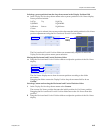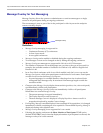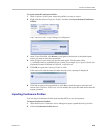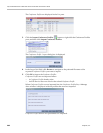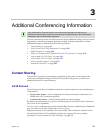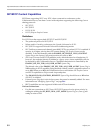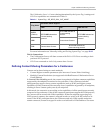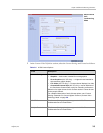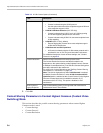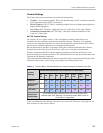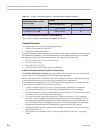
Polycom, Inc. 3-1
3
Additional Conferencing Information
Various conferencing modes and video features require additional settings, such as system
flag settings, conference parameters and other settings. In depth explanations of these
additional settings are described in the following sections:
•"Content Sharing” on page 3-1
•"Video Preview (AVC Only Participants)” on page 3-20
•"Media Encryption” on page 3-26
•"Packet Loss Compensation (LPR and DBA) AVC CP Conferences” on page 3-34
•"Lecture Mode (AVC CP Only)” on page 3-38
•"Lecture Mode (AVC CP Only)” on page 3-38
•"Audio Algorithm Support” on page 3-45
•"Permanent Conference” on page 3-49
Content Sharing
Content such as graphics, presentations, documents or live video can be shared with
conference participants using the H.239 (H.323) or BFCP (SIP) protocol, which is the
standard protocols for content sharing.
H.239 Protocol
The H.239 protocol allows compliant endpoints to transmit and receive two simultaneous
video streams:
• People video stream – video is displayed in Continuous Presence conferences or in
Media Relay (SVC) conferencing Mode
• Content video stream – Video Switching mode for content sharing
By default, all conferences, Entry Queues, and Meeting Rooms launched on the Collaboration
Server have H.239 capabilities.
To view Content, endpoints must use the same Bit Rate, Protocol, and Resolution. Endpoints
may not send Content while connecting to an Entry Queue.
Endpoints without H.239 capability can connect to the video conference without Content.
Cascade links declare H.239 capabilities and they are supported in Star cascading
topologies. For more details, see "Basic Cascading” on page 5-3.
In the RealPresence CloudAxis Solution, the conferencing parameters are defined in the
RealPresence DMA system component and should not be defined directly in the RealPresence
Collaboration Server Virtual Edition component.



